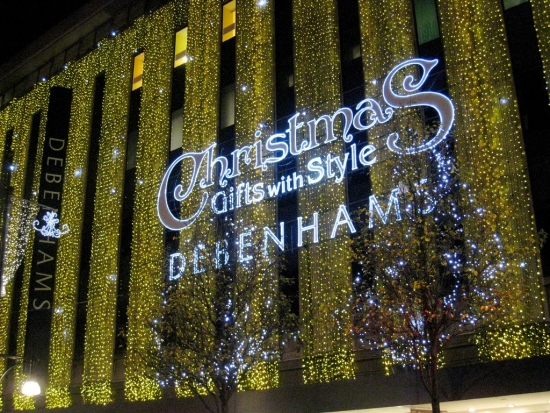The department store chain Debenhams has suffered its second winter of disastrous trading with poor Christmas sales prompting a £30m drop in pre-tax profits.

Analysts had been expecting profits of at least £110m for the six months to April, 2014. But in an early release of its trading statement — covering the 17 weeks to 28 December — the company said it expected profits of just £85m, down from £115m for the same period last year.
At the start of 2013 Debenhams blamed a 10 per cent fall in sales on the bad weather and over-optimistic buying. This year chief executive, Michael Sharp, pointed the finger at the high levels of cut price promotions which “impacted on both our sales and profitability”.
Within hours Debenhams share price fell forcing the resignation of its controversial chief finance officer, Simon Herrick. Under his guidance the retailer issued two profit warnings in nine months and suffered a mauling after the introduction of its so-called “Santa tax”, which imposed a one-off 2.5 per cent charge on suppliers’ outstanding payments.
Herrick was also criticised for over-optimistic guidance and poor communication with the City. “He had opportunities to reset expectations and he didn’t do that,” one analyst said. “Forecasts have come down a long way.” Debenhams has so far failed to name a replacement.
In a statement on this year’s disappointing trading figures the company said: “We did not experience the anticipated final surge in sales in the last week of the Christmas period.” It said online sales grew by 27 per cent for the 17-week period, but delivery income from the growth in online shopping was lower than anticipated.
So far Debenhams appears to be on its own by suffering a December sales dip. Its biggest rival, John Lewis, has reported strong trading over Christmas, with like-for-like sales up 6.9 per cent from a year earlier. Sales at its stores rose 1.2 per cent in the five weeks to 28 December with online sales soaring almost 23 per cent.
Unlike many other retailers, John Lewis did not discount before Christmas, but its first day of sales on 27 December saw record trading, with the retailer taking £35.6m. Another High Street big name, House of Fraser, said it had enjoyed a record Christmas trading period. Helped by a jump in online sales, like-for-like sales for the three weeks to 28 December rose 7.3 per cent, with online sales up by almost 58 per cent.
And the fashion retailer Next also reported a rise in festive trade “significantly” beyond its expectations. It said sales rose by 11.9 per cent between 1 November and 24 December, compared with the same period last year, and triggering an immediate hike in its full-year profits forecast to between £684m and £700m. Next also announced a one-off 2014 shareholder dividend of 50p costing the firm £75m from its £300m of surplus cash fund.
Neil Saunders is a retail analyst with Conlumino. “John Lewis and House of Fraser’s good numbers tell us that those retailers who created aspirational offers which excited and interested customers did well,” he explained. “That they are not necessarily the cheapest retailers on the High Street signals that people were looking for value, rather than just price.”
Previous Post
Broadgate Redevelopment to Expand Retail Offer